Manhattan Beach Once Exploded Like Vesuvius
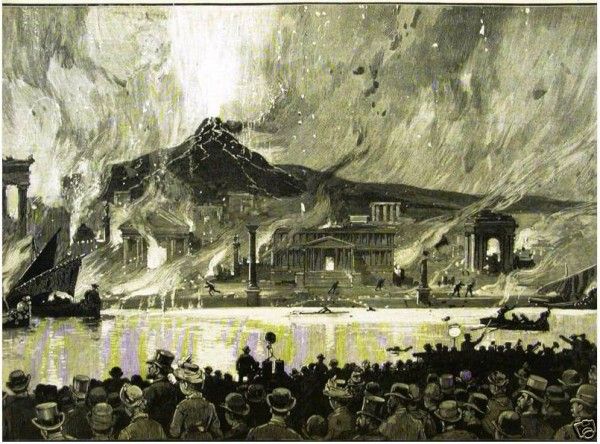
This was originally to be a “Postcard” piece, as the image above comes from an eBay auction. But further research revealed a fascinating part of Manhattan Beach history, dating back too far to fit even in the “Remember When” series.
From the Harper’s Weekly archive, the wood engraving above is not some illustration of a far off land beset by flame and destruction. Instead it’s a fireworks display, put on in 1885 in Manhattan Beach.
Back then, the neighborhood sported two grand hotels – the Oriental Hotel and the Manhattan Beach Hotel. Behind the latter, an enormous fireworks amphitheater – complete with man-made lake and dedicated fireworks factory – played out demonstrations. The operators, father and son team James and Henry Pain, were particularly fond of extravagant historical tableaus (the lake was used to recreate naval battles), and created shows like “The Battle of Gettysburg,” “Siege of Vera Cruz,” “The Burning of Rome,” “The Attack of Moscow” and “The Last Days of Pompeii.”
The wood carving above depicts that last one, in which the ancient Roman city of Pompeii is consumed by the lavas of Mt. Vesuvius. The show ran for quite some time, at least from 1885 – when the illustration above was published – to 1903, when a New York Daily Tribune profile of Manhattan Beach made reference to the performance. But, from the brief research we did, it appears all of the historical performances – which were held daily during intermissions for concerts by Patrick Gilmore, John Philip Sousa and Victor Herbert – were handled by the younger Pain, who managed the set from 1879 until 1905; it’s likely “The Last Days of Pompeii” ran just as long.
The performances were more than just a fireworks display. Live music played as costumed actors, clowns and acrobats entertained, and then ultimately scrambled for cover as the fireworks began exploding, simulating the volcano’s mighty eruption.
But not all the actors were professionals. In this 1903 account from the New York Times, a man named Jefferson Jackson was hired for a minor part in the performance. But Jackson, “a burly colored member,” wasn’t told what the role entailed.
Where Jefferson is now Mr. Pains wants to know. He was last seen negotiating the course between the fireworks amphitheatre and Sheepshead Bay in record-breaking time clad in a costly, bespangled garment, and with a stream of flame behind him.
Jackson was an Alabama negro just from the plantation, and when he was hired to carry a torch in the “Last Days of Pompeii,” nobody explained to him the nature of the spectacle. When Mount Vesuvius went of Saturday night Jefferson Jackson went likewise.
He carried what is known as a lycapodium torch, which, whirled in the air, causes a flambeau effect. The faster Jackson ran, the greater became the flame from the torch until as he rushed along the board walk to Sheepshead he looked like a traveling flame. He did not appear for rehearsal yesterday.
What happened to Jackson we may never know. But the prodigious Henry Pain continued to be an American star of the pyrotechnic world, known as “The Fireworks King.”
The Brooklyn Eagle did a nice little bit on his work last year:
[Pain] traveled to France for the 1900 Paris Exposition, or World’s Fair, then back to America for the Pan-American Exposition at Buffalo in 1901 the St. Louis Fair in 1904.
At the Buffalo celebration shortly after the Spanish-American War, he created an aerial display of a map of the USA including our latest possessions, Puerto Rico, Cuba and the Philippine Islands. For the finale, the likeness of the President, William McKinley. While attending the fair later, McKinley was assassinated and the former New York governor, Theodore Roosevelt, stepped into the office. Later, Pain also created portraits in fire of Presidents Roosevelt, Wilson and Taft.
Before Henry Pain died in 1935, he was interviewed for The New Yorker by James Thurber for the July 4, 1931, issue after 27 years in the fireworks business. In the article, Thurber revealed that the largest display of fireworks set up by Pain’s company was for the Havana inaugural of President Machado in Cuba in 1929. Over $25,000 of fireworks were shipped there, perhaps enough to sink the battleship Maine all over again. Every rocket and explosive device was set off in less than two hours. Thurber reported that the largest and most expensive piece was a replica of Havana’s new capitol which was 70 feet high and 700 feet long, costing $6,000 but lit up for only a few minutes.
Below are close-ups of the engraving from Harper’s Weekly:
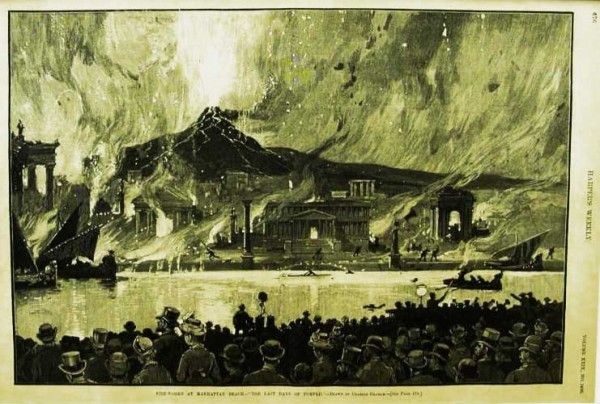
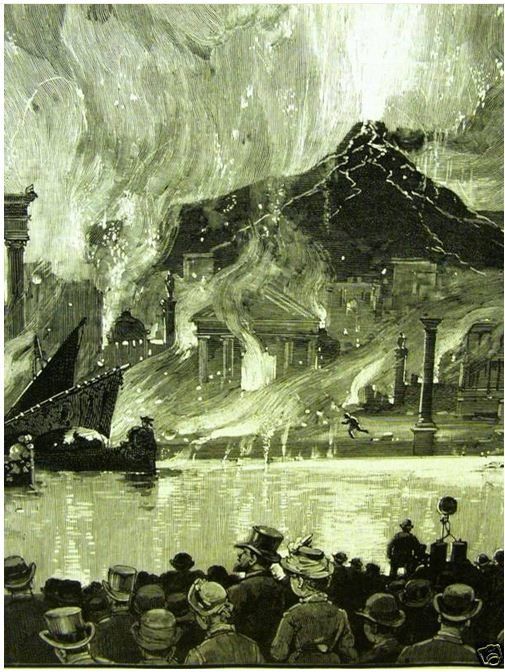
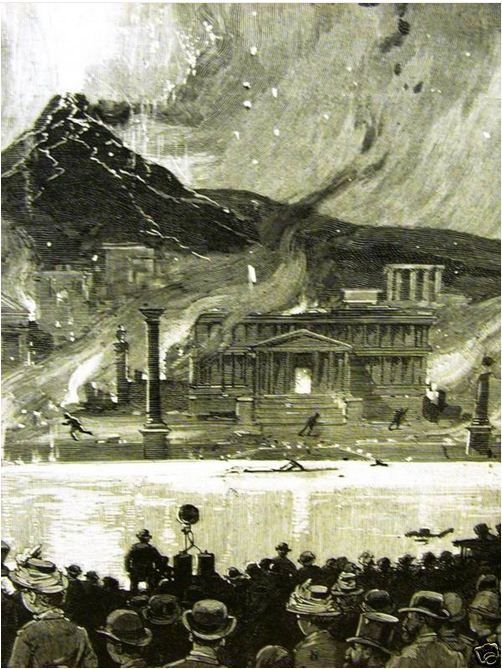
And here are images from the Daily Tribune of the fireworks display, as well as the hotels, beach and other Manhattan Beach attractions (click to enlarge):
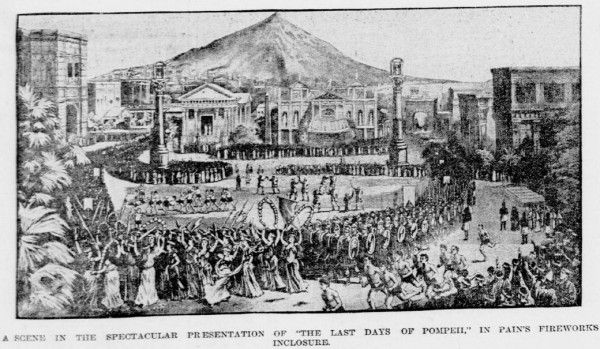
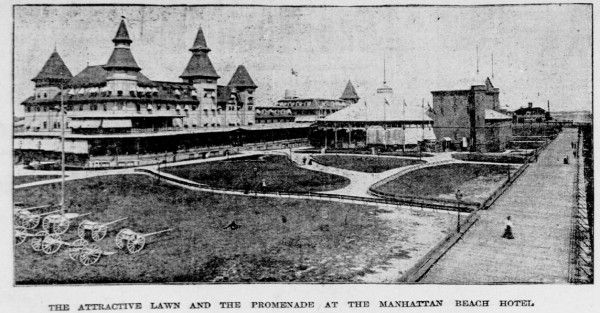
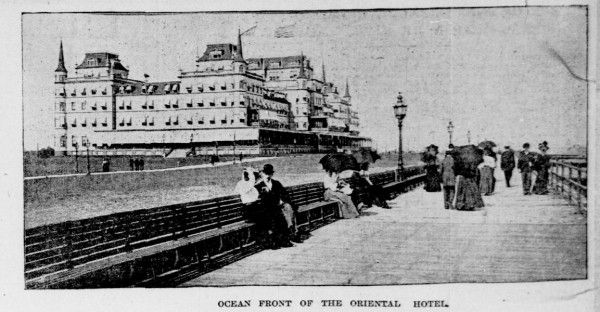
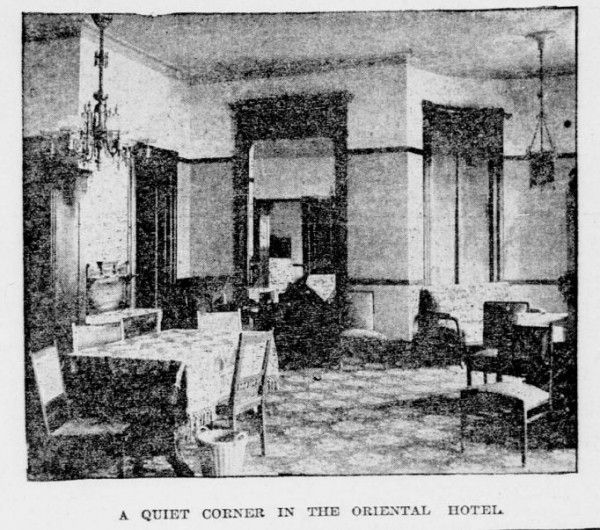
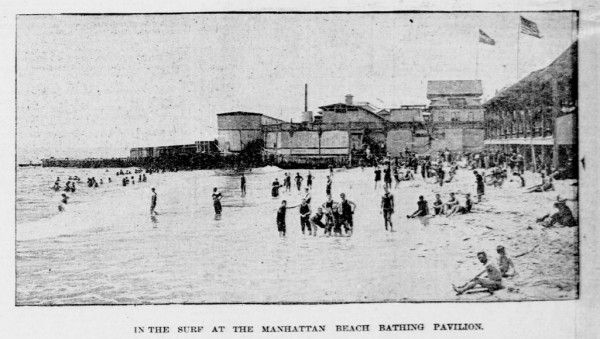
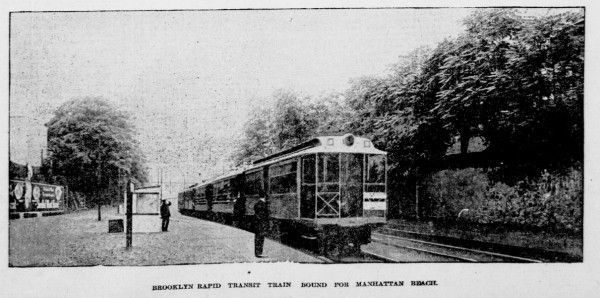
Sources:
http://www.brooklyneagle.com/categories/category.php?category_id=23&id=29228
http://query.nytimes.com/mem/archive-free/pdf?res=9A01E1DF1739E433A2575AC2A9609C946297D6CF
http://chroniclingamerica.loc.gov/lccn/sn83030214/1903-06-28/ed-1/seq-23.pdf




